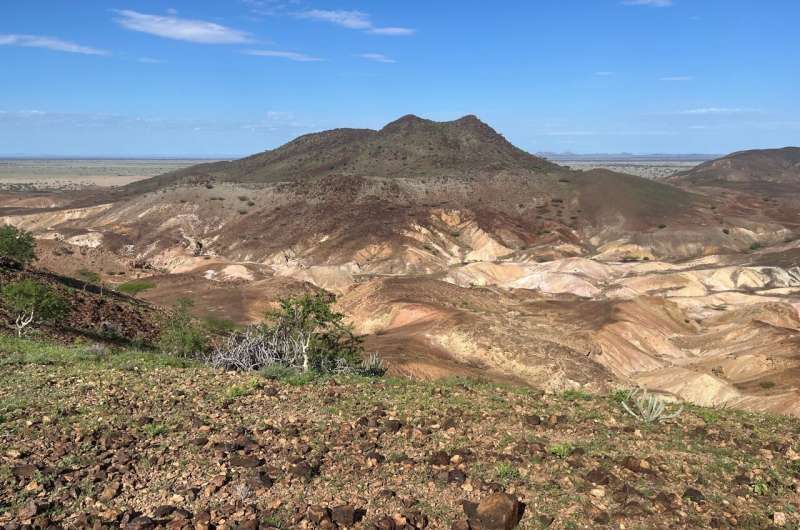This article has been reviewed according to Science X's editorial process and policies. Editors have highlighted the following attributes while ensuring the content's credibility:
fact-checked
peer-reviewed publication
proofread
Researchers elucidate biogeographic context of human evolution in East African Rift System

Ignacio A. Lazagabaster, a Ramón y Cajal researcher at the Centro Nacional de Investigación sobre la Evolución Humana (CENIEH), is part of the international team that has published a study of the biogeographic context of human evolution in the East African Rift System in the journal Nature Ecology & Evolution.
This study, which centers on analyzing the fossil records of mammals in this region, offers new perspectives on how climatic and environmental changes influenced the evolution of mammals and hominins over the last 6 million years.
It highlights in particular how biotic homogenization, which is the process by which the faunas of different regions become more similar in composition, has been a crucial factor in the evolution of the ecosystems and the species inhabiting them.
"By means of beta diversity analysis, which is the relationship between local and regional biodiversity, we are able to track how the changes in vegetation and climate have driven dispersion and extinction patterns over time," explains Lazagabaster.
Faunal uniformity
The faunas of the Late Miocene and Pliocene (between about 3 and 6 million years ago) were mainly comprised of endemic species. A change toward biotic homogenization, or faunal uniformity, started about 3 million years ago, driven by the loss of endemic species in functional groups and a rise in the number of grazing species shared between regions.
This important biogeographic transition matches closely the regional expansion of ecosystems dominated by graminoids and pastures of type C4, which grow better in warm and dry climates. These environmental changes impacted directly on the feeding and mobility patterns of the hominins and faunas that shared their habitat.
"Given that the hominins were certainly influenced by many of the same factors as other mammals in eastern Africa, this work offers a new perspective on the links between environmental and human evolutionary changes, with an integrative approach that furnishes us with a framework for future research and for testing hypotheses about the adaptation of hominins to their surroundings," Lazagabaster concludes.
More information: John Rowan et al, Long-term biotic homogenization in the East African Rift System over the last 6 million years of hominin evolution, Nature Ecology & Evolution (2024). DOI: 10.1038/s41559-024-02462-0
Journal information: Nature Ecology & Evolution
Provided by CENIEH



















